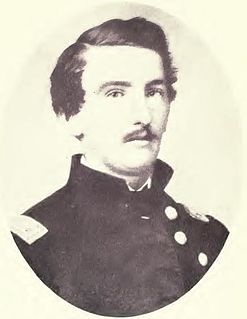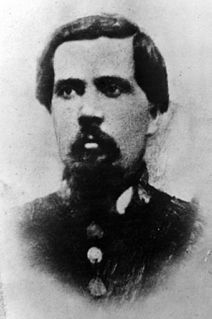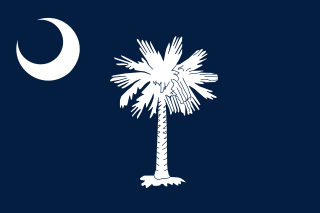| Pee Dee Light Artillery | |
|---|---|
| Active | August 1861 - April 26, 1865 |
| Country | Confederate States of America |
| Allegiance | Confederate |
| Branch | Confederate States Army |
| Type | Artillery battery |
| Part of | Army of Northern Virginia, Army of Tennessee |
| Engagements | Seven Days Battles Battle of Antietam Battle of Fredericksburg Battle of Gettysburg Battle of Rivers' Bridge |
The Pee Dee Light Artillery was a distinguished Confederate light artillery battery during the American Civil War. The origins of the battery began as the Darlington Guards, a local militia of Darlington, South Carolina. The Darlington Guards volunteered their service to South Carolina on January 4, 1861, for a period of six months. These men were the very first soldiers to volunteer to fight in Civil War. They became Company B, First South Carolina Volunteers, commanded by Captain F.F. Warley and Lieutenant David Gregg McIntosh. After six months on the Charleston, South Carolina, coast and a short campaign in Virginia, the unit was released. Half the unit remained with Captain Warley and served the remainder of the war as the Darlington Guards. The other half reformed in Darlington, South Carolina, under McIntosh. The unit called themselves the Pee Dee Rifles and in August 1861 rendered their service as an infantry unit to the Confederate States of America for the duration of the war. While in training in Suffolk, Virginia, in the winter of 1861-62, the unit was reorganized as Company D, First South Carolina Regiment, a light artillery battery, and became the Pee Dee Light Artillery.

David Gregg McIntosh was a Confederate artillery officer during the American Civil War from the state of South Carolina.
Contents
In 1862, the battery was assigned to General A.P. Hill’s Light Artillery Division and fought in the Seven Days Battles. During that battle, two horses were shot from beneath Captain McIntosh in a single day. Afterwards, the battery was reorganized under General Stonewall Jackson’s famous Second Corps. The battery fought with General Jackson at the Battles of Cedar Mountain, Second Manassas, Chantilly, Harpers Ferry, Sharpsburg and the Fredericksburg. In 1863, the battery fought in the Battle of Chancellorsville and the Battle of Gettysburg. In 1864, the battery did not have enough men and horses to effectively operate in battle. In June 1864, the battery exchanged service with Charles Battery serving in the Charleston Harbor. In 1864 the Pee Dee Light Artillery served around Charleston Harbor until they were utilized in an effort to slow down Sherman’s March to the Sea. In 1865, the Pee Dee Light Artillery continued as part of the Confederate forces under General Johnston. On April 26, 1865, General Johnston surrendered his forces. The battle flag of the Pee Dee Light Artillery was never surrendered. Instead, it was wrapped around the body of the battery guidon bearer, Private R.C. Nettles who returned to South Carolina. The battle flag remained in the hands of the members of the Pee Dee Light Artillery in the Darlington area until 1905, when it was turned over to the South Carolina Legislature by surviving veterans. The flag has recently been preserved and remains today in the South Carolina Confederate Relic Room and Military Museum in Columbia, South Carolina.

The Seven Days Battles were a series of seven battles over seven days from June 25 to July 1, 1862, near Richmond, Virginia, during the American Civil War. Confederate General Robert E. Lee drove the invading Union Army of the Potomac, commanded by Maj. Gen. George B. McClellan, away from Richmond and into a retreat down the Virginia Peninsula. The series of battles is sometimes known erroneously as the Seven Days Campaign, but it was actually the culmination of the Peninsula Campaign, not a separate campaign in its own right.

The Battle of Cedar Mountain, also known as Slaughter's Mountain or Cedar Run, took place on August 9, 1862, in Culpeper County, Virginia, as part of the American Civil War. Union forces under Maj. Gen. Nathaniel P. Banks attacked Confederate forces under Maj. Gen. Thomas J. "Stonewall" Jackson near Cedar Mountain as the Confederates marched on Culpeper Court House to forestall a Union advance into central Virginia. After nearly being driven from the field in the early part of the battle, a Confederate counterattack broke the Union lines resulting in a Confederate victory. The battle was the first combat of the Northern Virginia Campaign.

The Second Battle of Bull Run or Battle of Second Manassas was fought August 28–30, 1862 in Prince William County, Virginia, as part of the American Civil War. It was the culmination of the Northern Virginia Campaign waged by Confederate Gen. Robert E. Lee's Army of Northern Virginia against Union Maj. Gen. John Pope's Army of Virginia, and a battle of much larger scale and numbers than the First Battle of Bull Run fought on July 21, 1861 on the same ground.












